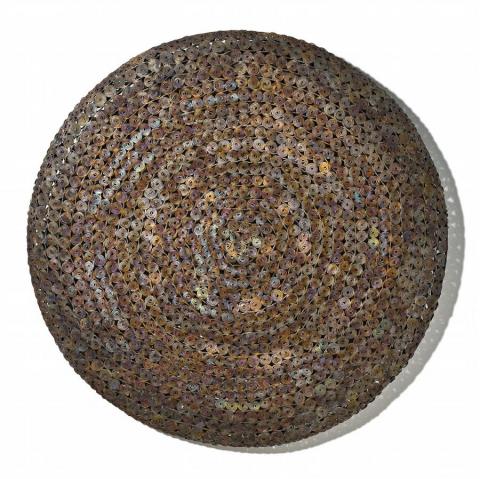DISC II, 1999
Bronwyn Oliver
copper
62.0 (diameter) x 8.0 cm
Christine Abrahams Gallery, Melbourne Private collection, Melbourne
Bronwyn Oliver's sculptures are conundrums that belie the intensive process of their construction. The almost universal desire of the viewer is to touch the work; to seek confirmation of what we see, as though the gaze provides insufficient proof.
Characteristically exacting, Oliver's sculptures are taut with quiet energy, alluding to forms from the natural world. Closer inspection, however, reveals a dynamism that can only originate from the artificial. With a thoughtful sculptural sensibility, it is the 'delicate friction between surface and depth (that) breathes life into her objects: dense surfaces with translucent and vital interiors of air and light. Her objects are often sphere-like hollow spaces or openings - openings which lead to somewhere else, devolving from where they started.'1
Deeply seductive, the lithe copper forms for which Oliver became best known, and of which Disc II, 1999, is a flawless example, are imbued with a classical, formal restraint. With an emphasis on symmetry, proportion and the regularity of parts, the object alludes to the lost Archaic sculpture, Discobolus c.460-450 BC, which itself was a manifestation of rhythmos - harmony and balance.
As Oliver notes, 'When the ideas, the formal elements and the medium all work together a sculpture will 'sing' with a kind of rightness. It takes on a life, a presence, which is removed from this world. It belongs to a mythical other life, without a place in time.'2
1. Bullock, N., in Bond. T., and Tunnicliffe, T., (eds.)., Contemporary, Art Gallery of New South Wales Contemporary Collection , Art Gallery of New South Wales, Sydney, 2006, p. 326 2
. Sturgeon, G., Contemporary Australian sculpture , Craftsman House, Sydney, 1991, p. 74
MERRYN SCHRIEVER
